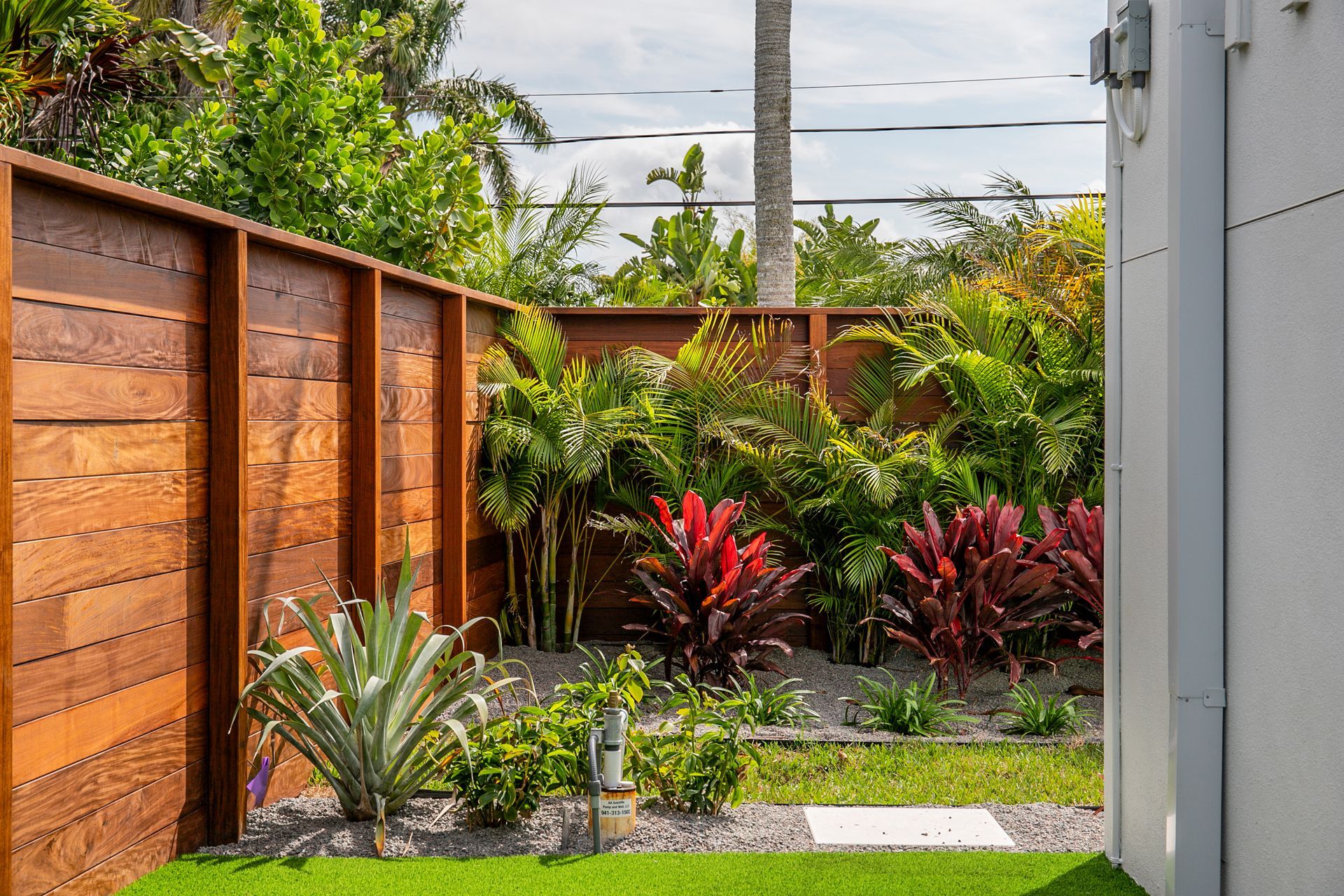REquest an Estimate:
Removing Algae from a Wooden Fence: A Step-by-Step Guide

Maintaining a wooden fence can be challenging, especially in humid climates like Florida, where algae thrive. The state's moisture-rich environment creates the perfect conditions for algae to grow on outdoor structures. If your fence has turned green and slippery, don’t worry—removing algae is simpler than it looks. In this guide, we'll walk you through how to remove algae from a wooden fence using safe, eco-friendly methods while keeping the integrity of your fence intact.
What Causes Algae to Grow on Wooden Fences?
Algae is a green, sometimes slimy organism that loves damp, shaded areas. On wooden fences, algae can accumulate due to excess moisture, lack of sunlight, and organic matter buildup. The growth of algae can weaken the wood over time, leading to rot and a less appealing appearance.
Algae growth is common in areas that:
- Receive little to no direct sunlight
- Are exposed to frequent rainfall or humidity
- Have organic material (like leaves or dirt) that gets trapped on the wood
Preventing algae starts with understanding why it grows. By addressing the root causes, you can reduce its recurrence after cleaning.
What Are the Best Tools and Materials for Removing Algae?
Before we discuss the cleaning process, gather the following materials to ensure an effective cleanup:
- Bucket of warm water
- Scrub brush with medium bristles
- Garden hose with a spray nozzle
- Natural cleaning solution (vinegar or baking soda)
- Eco-friendly detergent (optional for tougher algae)
- Gloves for protection
These tools and materials are all you need to restore your fence’s natural beauty while keeping the environment in mind.
How to Remove Algae from a Wooden Fence
Now, let's get into the core of the task—removing algae from your wooden fence. Follow these steps for an efficient and thorough cleaning:
- Clear the Area: Remove any debris such as leaves or dirt from the fence. This will make the cleaning process easier and prevent further algae growth.
- Prepare the Cleaning Solution: Mix one part vinegar to one part water in a bucket. For tougher algae, add some baking soda to form a paste.
- Apply the Solution: Use a sponge or brush to apply the cleaning solution directly onto the algae. Make sure the wood is saturated, especially in areas with heavy growth.
All you need to do is add 3/4 cup regular bleach to one gallon of water in a five-gallon bucket. After pre-wetting the fence, scrub on the solution, let it sit for 5 minutes, and then wash away with the hose. - Scrub the Fence: Using a scrub brush, gently scrub the algae off the wooden surface. Scrub in the direction of the wood grain to avoid damaging the fence.
- Rinse Thoroughly: Once you’ve scrubbed the fence, use a garden hose to rinse the area thoroughly. Ensure no cleaning solution is left behind, as it can leave residue.
- Dry the Fence: Allow the fence to air dry. If possible, let sunlight reach the fence to help dry it faster and discourage algae regrowth.
Eco-Friendly Methods to Remove Algae from a Wooden Fence
If you're looking for a more sustainable approach, several natural methods work just as effectively:
- Vinegar Solution: As mentioned, vinegar is a powerful cleaning agent. Its natural acidity breaks down algae without harming the wood.
- Baking Soda Paste: Baking soda is another safe option for removing stubborn algae. Its abrasiveness helps dislodge algae while remaining gentle on the wood.
- Hydrogen Peroxide: For extra-tough algae spots, hydrogen peroxide can be used. It’s a strong yet eco-friendly alternative to harsh chemicals.
Avoid using bleach or harsh chemicals, as these can damage the wood and potentially harm surrounding plants and soil.
How Can You Prevent Algae from Growing on a Wooden Fence?
Prevention is key to avoiding frequent algae build-ups. Here are some steps you can take to keep your fence clean for longer:
- Improve Sunlight Exposure: Trim any trees or shrubs that may be casting shadows over the fence. Algae thrive in shaded areas, so increasing sunlight exposure can prevent its growth.
- Regular Cleaning: A routine wash of your fence every few months can prevent organic matter from building up and creating an ideal environment for algae.
- Apply a Sealant: Using a high-quality wood sealant can protect your fence from moisture. A water-resistant barrier will prevent algae from forming on the surface.
- Clear Debris Regularly: Make sure leaves, dirt, and other debris don’t accumulate on your fence, especially after storms or heavy winds.
By combining these strategies, you can keep your wooden fence looking clean and algae-free for years.
Keep Your Wooden Fence Algae-Free
Removing algae from a wooden fence may seem daunting, but with the right tools and a little elbow grease, you can restore your fence to its original state. Using eco-friendly methods like vinegar and baking soda not only protects your fence but also the environment. Remember, consistent maintenance and preventative steps are essential to keeping algae at bay and preserving the beauty of your wooden fence.
For more tips on wooden fence maintenance, check out our guide on Best Wood Fence Cleaning Practices and learn how to keep your fence strong and durable for the long haul.
Mon-Fri: 8am-5pm • Sat-Sun: Closed
Financing, Cash, Check & All Major Credit Cards
License: FL CBC Lic. #1263682
4385 Independence Ct,
Sarasota FL 34243
Copyright © 2023 Freedom Fence




